Theater and Stage
Merry Christmas 1945
What ever happened to NYC's Xmas Parade? Also: a slightly weird beauty contest.
Posted By: Paul - Sun Dec 17, 2023 -
Comments (0)
Category: Holidays, Parades and Festivals, Theater and Stage, North America, United Kingdom
Mystery Illustration 112
What Shakespeare play--one of the more famous--does this production with its bizarre costumes portray?The answer is here.
Or after the jump.
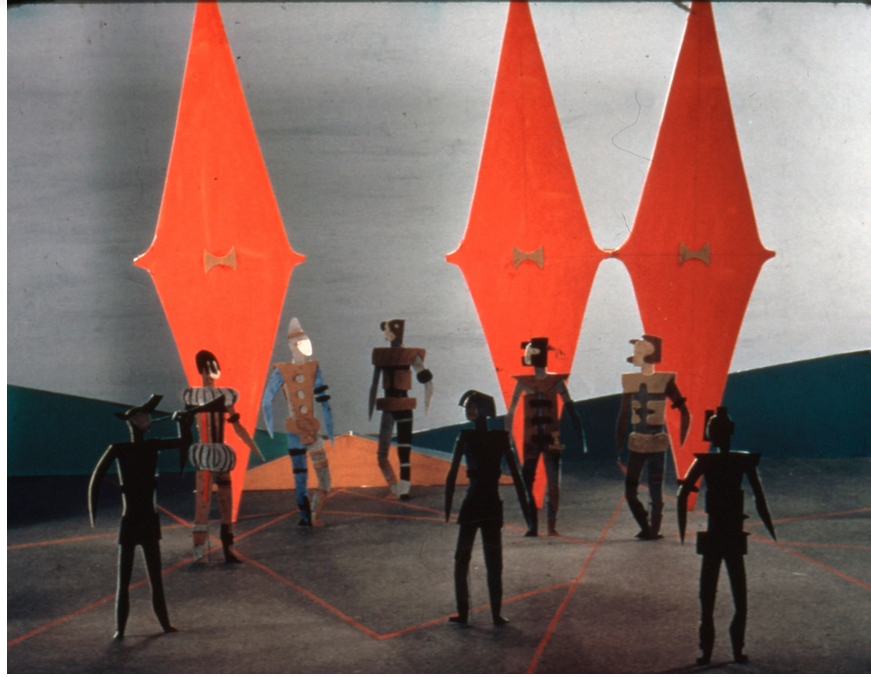
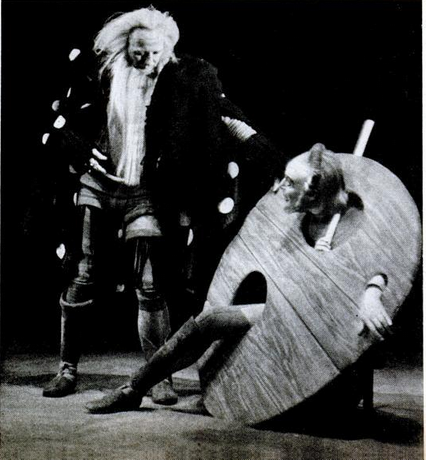
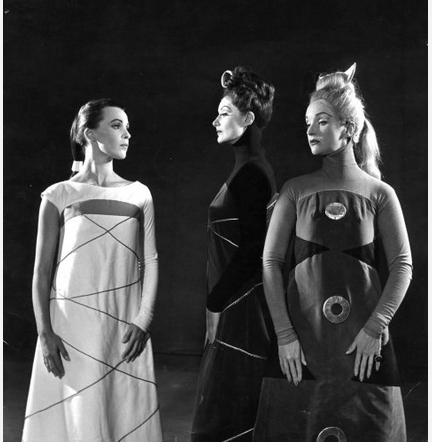
More in extended >>
Posted By: Paul - Sun Nov 12, 2023 -
Comments (1)
Category: Costumes and Masks, Theater and Stage, Avant Garde, 1950s
Attacked by rogue Brownies
A few translations may be necessary:Brownies: the British equivalent of girl scouts
The gods: "a theatrical term referring to the highest areas of a theatre such as the upper balconies"
Also, I'm puzzled by Gladys Long's comment that, "The trouble is when children are in uniform they are more noticeable than others who are not."
Wasn't the problem that the girls were violent, not that they were "more noticeable"?

Bristol Evening Post - Feb 1, 1978
Posted By: Alex - Wed Oct 25, 2023 -
Comments (5)
Category: Crime, Theater and Stage, Junk Food, 1970s
Touch, The Generation Gap Musical
This dated abomination seems to have all but vanished from the annals of stage history, so far as googling can determine.
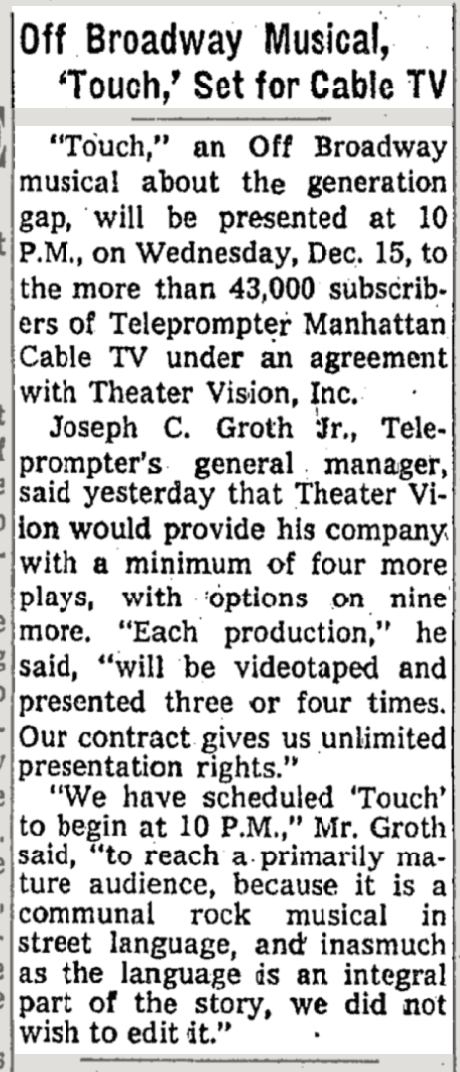
Enjoy the whole performance, thanks to the capacious memory of the Internet Archive.


Posted By: Paul - Thu Sep 21, 2023 -
Comments (3)
Category: Music, Stereotypes and Cliches, Theater and Stage, Bohemians, Beatniks, Hippies and Slackers, 1970s
Tenjō Sajiki
A small sampling of the avant-garde theater of the troupe named Tenjō Sajiki. Their Wikipedia entry.
Posted By: Paul - Mon Sep 11, 2023 -
Comments (0)
Category: Theater and Stage, Avant Garde, Asia, Twentieth Century
How Now, Dow Jones
The weird premises of certain Broadway shows is a theme encountered before on WU. Here's another instance.How Now, Dow Jones, set in Wall Street, follows Kate who announces the Dow Jones numbers. Her fiancé will not marry her until the Dow Jones Industrial Average hits 1,000.
The author William Goldman offers his analysis.
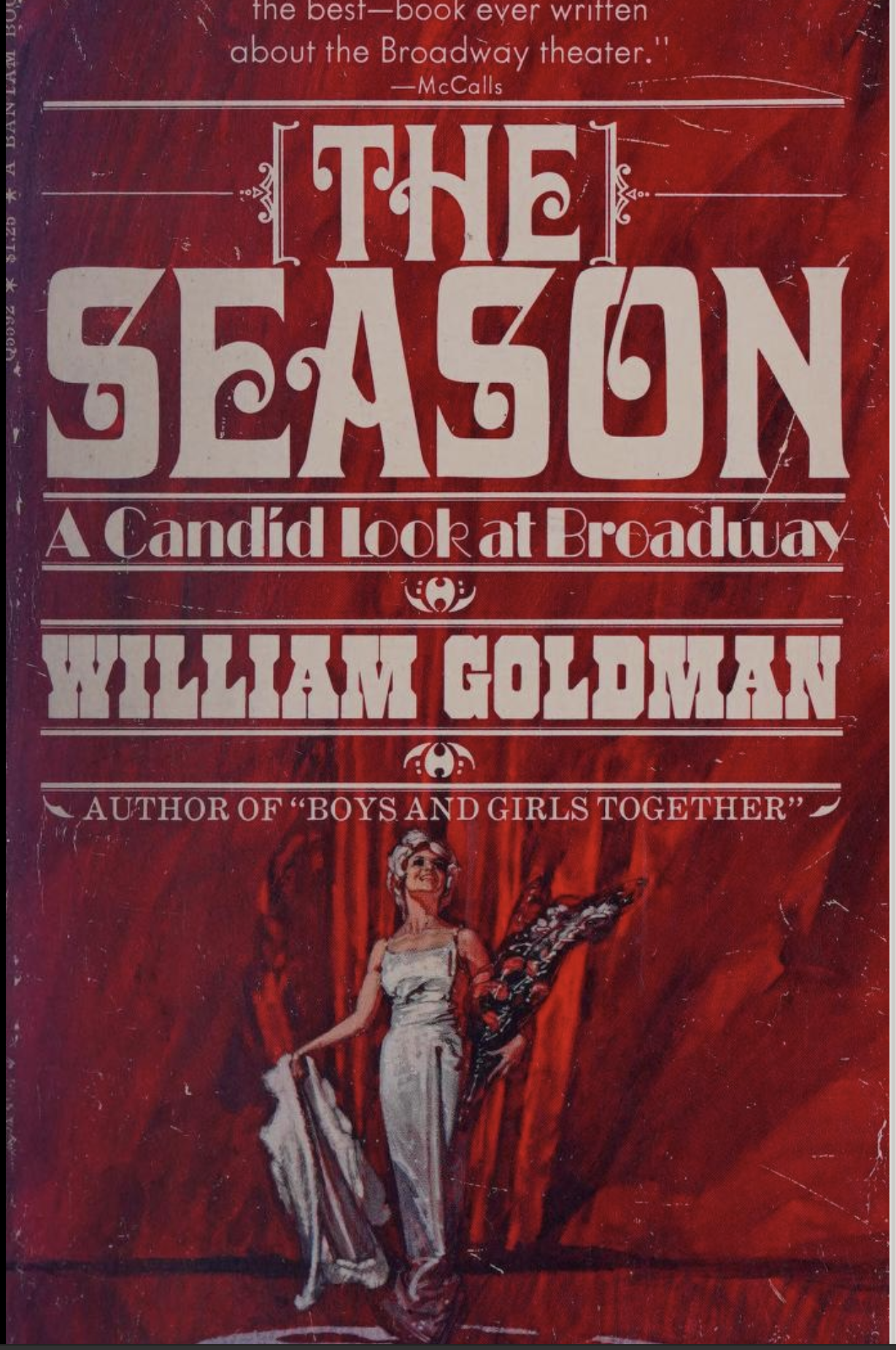
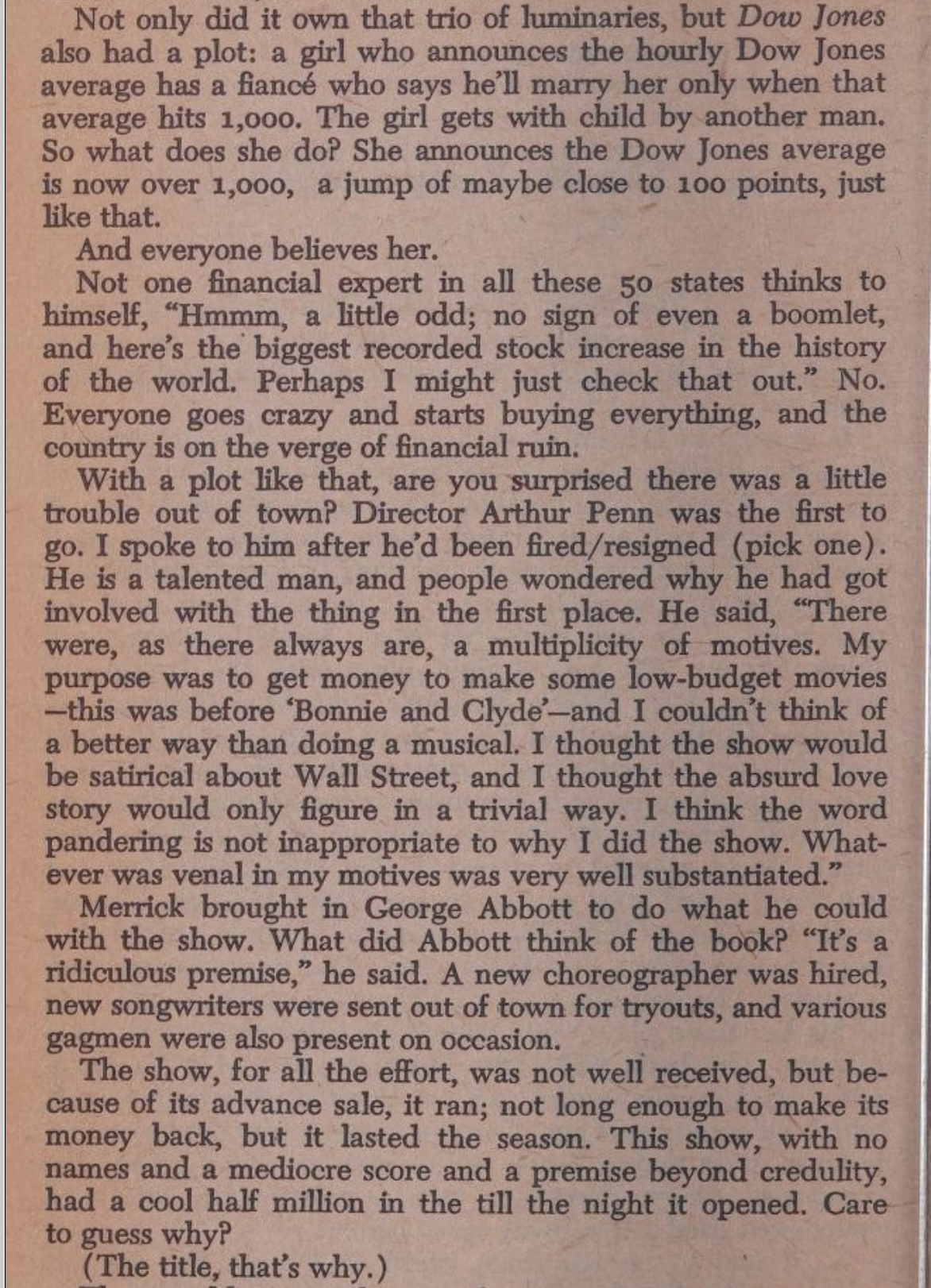

Posted By: Paul - Mon May 22, 2023 -
Comments (3)
Category: Ineptness, Crudity, Talentlessness, Kitsch, and Bad Art, Money, Music, Theater and Stage, 1960s
The Perfume Concert of Sadakichi Hartmann
Nov 30, 1902: Sadakichi Hartmann gave the world's first "perfume concert" at the New York Theatre. It was meant to be a journey around the world via scents. Hartmann recited a travel monologue as fans blew scents toward the audience.The problem was that in the early 1900s people freely smoked in theaters. So no one beyond the first few rows could smell anything except cigar smoke. The audience soon left, en masse.
Wikipedia article about Sadakichi Hartmann.
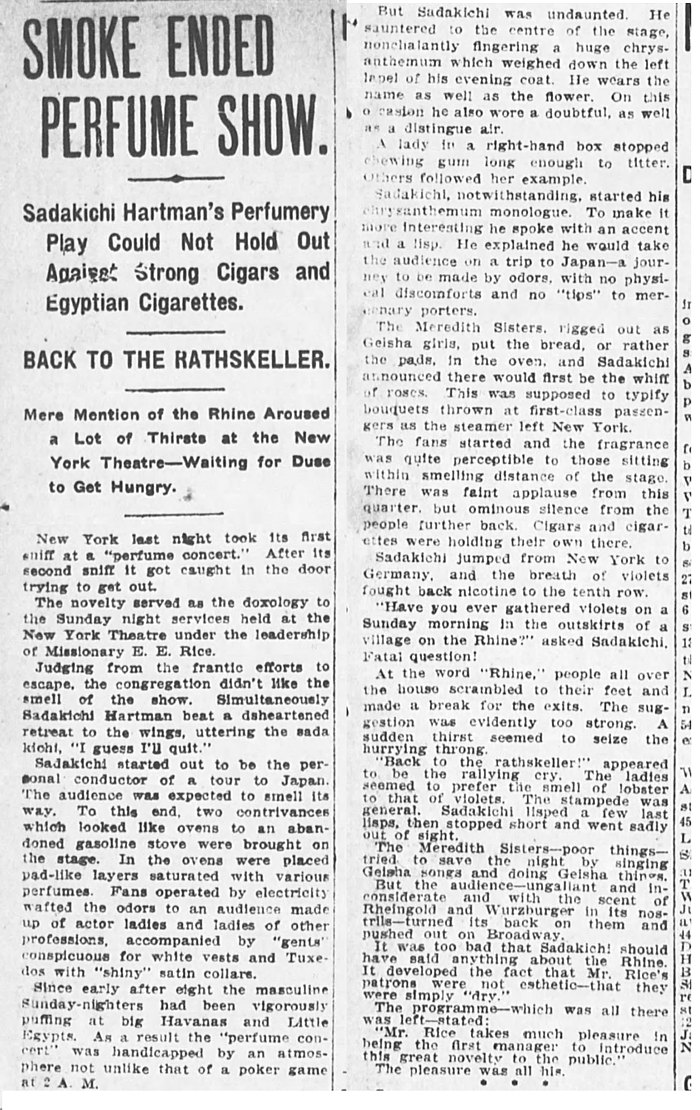
New York Evening World - Dec 1, 1902
Posted By: Alex - Sat Apr 15, 2023 -
Comments (2)
Category: Theater and Stage, 1900s, Perfume and Cologne and Other Scents
Truman Capote, Broadway Lyricist
Did the same author who penned IN COLD BLOOD write "Two Ladies in De Shade of De Banana Tree?"Indeed he did!
Posted By: Paul - Sun Apr 09, 2023 -
Comments (0)
Category: Ethnic Groupings, Fey, Twee, Whimsical, Naive and Sadsack, Stereotypes and Cliches, Theater and Stage, 1950s
G.I. Hamlet
During WWII, Shakespeare's HAMLET was adapted for soldiers in the Pacific theater. As TIME magazine revealed:
The Theater: Hamlet in Hawaii
Monday, Nov. 27, 1944
The Army, taking the Bard by the horns in Hawaii, has come up with a G.I. Hamlet. Moreover, it has come up smiling. With Major Maurice Evans bossing the job and playing the introspective Prince for the first time since 1940, the effect on the dogfaces has been, for Evans, "simply staggering." They even rise above normal behavior by refraining from hollering or whistling when performers go into a clinch. Commented one G.I.: "They certainly must have done a lot of rewriting to bring that play so up to date."
A blue pencil, not a pen, helped do it: a third of the play has been hacked off.
The modernish costumes helped, too: Hamlet wears trousers instead of tights, delivers "To be, or not to be," in a dinner jacket with silver-brocade lapels. No help at all were the unpoetic sergeants who inevitably shattered the high-tragic mood of the soldier cast's rehearsals, with such prose passages as "Hey, Polonius, you and those other guys get some brooms and clean up the theayter."
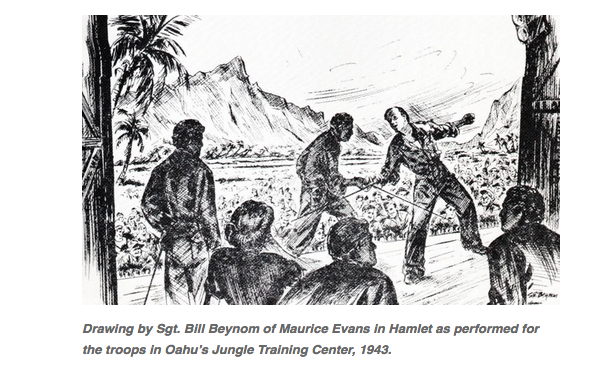
Wikipedia reveals:
[the] highly truncated version of the play that he played for South Pacific war zones during World War II...made the prince a more decisive character. The staging, known as the "G.I. Hamlet", was produced on Broadway for 131 performances in 1945/46.
This interesting article has more details, and another picture.
Regarding the quote below, I can just picture Hamlet in a fistfight with his stepfather.
Evans’s romantic, extroverted, unneurotic, virile, and soldier-like Hamlet suggested Lord Byron.
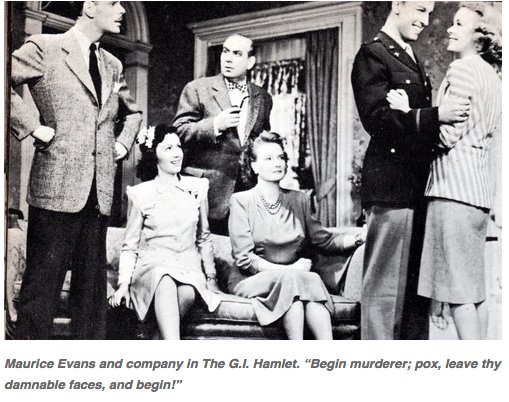
Posted By: Paul - Mon Mar 27, 2023 -
Comments (1)
Category: Theater and Stage, War, Adaptations, Reworkings, Recastings and New Versions, 1940s
Louis Duprey’s Trapdoor Theater Seats
One of the minor annoyances of going to a theater is having your view blocked if someone in front of you gets up from their seat. Or having to stand from your seat to let someone get by.Back in 1924, Louis Duprey patented a solution to this problem. He envisioned a theater in which guests would enter through a subchamber, get into their seats, and then be raised upwards by a hydraulic lift, through a trapdoor, into the theater itself. Anyone who wanted to leave early could simply lower themself back down, disturbing no one else.
It's an over-engineered solution to a minor problem, but I would happily pay extra, at least once, to experience a theater like this. Though I'd probably spend the entire time going up and down in my chair.
More info: Patent No. 1,517,774
Related Posts: Thomas Curtis Gray's horizontal theater, Theater in a Whale, Lloyd Brown's Globe Theater
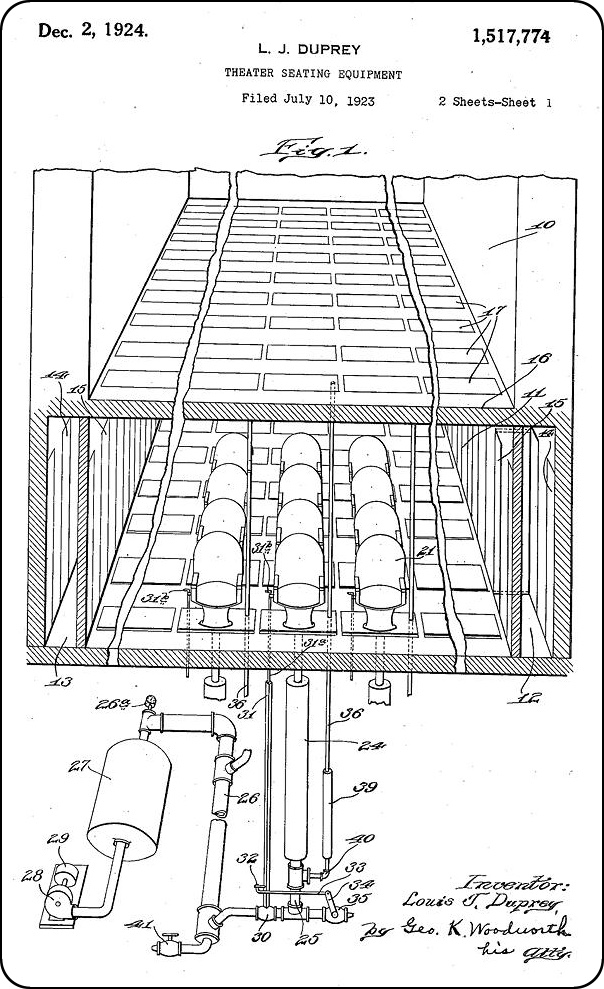
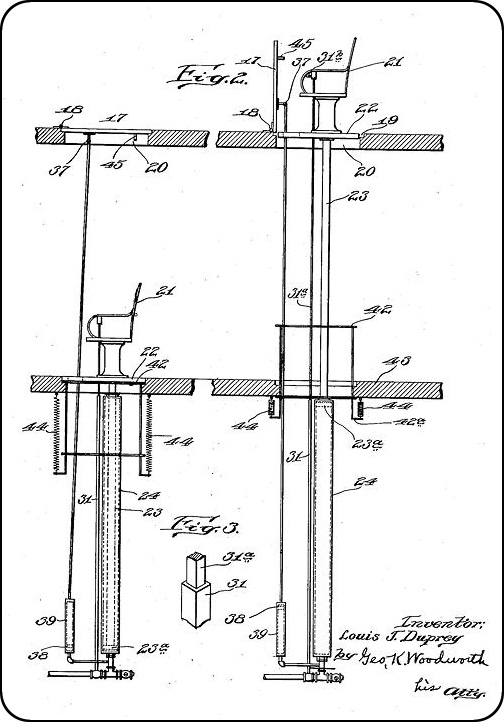
via New Scientist
Posted By: Alex - Thu Oct 20, 2022 -
Comments (6)
Category: Architecture, Entertainment, Theater and Stage, Patents, 1920s

| Who We Are |
|---|
| Alex Boese Alex is the creator and curator of the Museum of Hoaxes. He's also the author of various weird, non-fiction, science-themed books such as Elephants on Acid and Psychedelic Apes. Paul Di Filippo Paul has been paid to put weird ideas into fictional form for over thirty years, in his career as a noted science fiction writer. He has recently begun blogging on many curious topics with three fellow writers at The Inferior 4+1. Contact Us |




